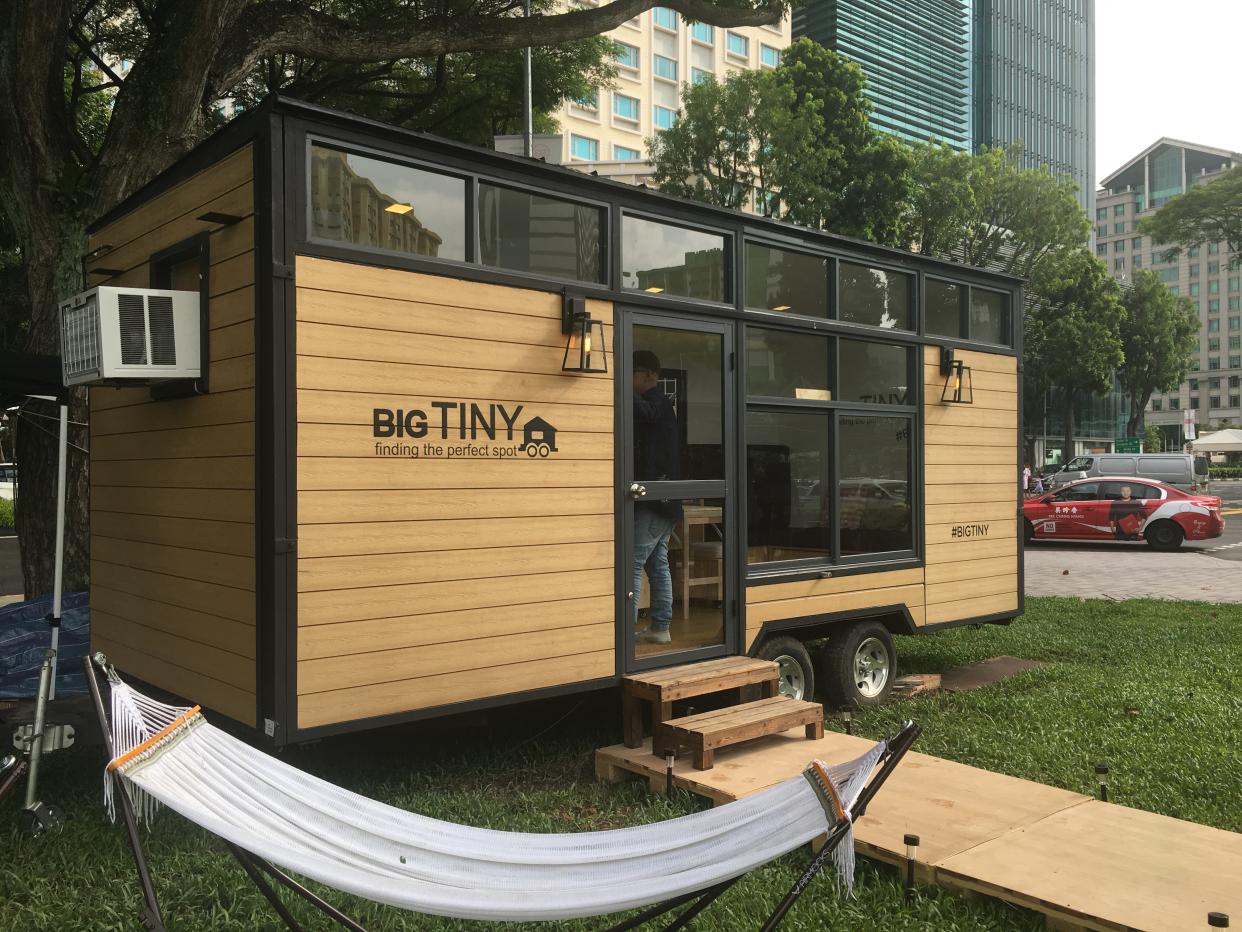Would you stay in a 6-metre ‘tiny house’ in Singapore?

Ever wondered what it’s like to live in a tiny house nearly the size of a shipping container?
A Singapore start-up has launched a series of “tiny” houses on wheels measuring 4.8 metres, 6 metres or 7.2 metres in length that families of up to four individuals can live in.
While the dwellings are not available in Singapore just yet, local company Big Tiny – made up of buddies Adrian Chia, Jeff Yeo and Dave Ng – will be listing these houses for rent on Airbnb by February.
These houses will be placed in Australia, near the Blue Mountain or the Mornington Peninsula. Rent will be priced from $150 to $250, and it is best to stay for at least three nights.
The trio also hopes to increase from having two units in Australia to 50 by the end of 2018. After that, they’ve got their eye on New Zealand.

“Tiny house is part of an international movement where people are downsizing their houses to simplify their lives,” said Chia, 37, during a media preview on Tuesday (16 January). “By downsizing their houses you will actually reduce resource consumption.”
It takes no more than five steps to get to the various points within the house, which comes complete with a bed, toilet, kitchenette and common space. It is both air-conditioned and equipped with a heater, meaning that it is habitable in all seasons.
Occupants can enjoy the scenery from the inside house through its large double-glazed windows and feel safe with the secure digital locks.
Built using metal and recycled materials, each house costs about S$80,000 to construct and is generally resistant to bad weather. The houses also operate sustainably through the use of solar panels, a rainwater collection system and a toilet that doubles as a source for compost energy. Each structure has a lifespan of up to 20 years, according to Chia.
Besides getting a taste of the simple life, the best part about living in this house would be the chance to live closer to nature. The trio said they have worked out profit-sharing deals with farm owners in Australia to ensure the houses are placed in rural areas with majestic scenery and activities for urban dwellers to recharge and bond with their families.

“For each unit, you will find a list of activities on Airbnb that the families can engage in,” said Chia, during a Q&A session. These activities include wine tasting at a nearby vineyard or horse-riding.
The idea behind Big Tiny itself was conceived after Chia had gone on a holiday in Australia two years ago, when he lived at a farmstay near The Great Ocean Road in Victoria. Chia, who studied real estate, then roped in primary school mate Yeo and NS buddy Ng for this business venture, which is backed by financial investors consisting of individuals from the local real estate industry, among others.
Prior to designing the house, which come in Scandinavian and country-inspired designs, Ng, 37, had lived in a tiny house for seven consecutive days to understand the fundamentals of designing a house even smaller than a regular studio apartment in Singapore.
“The house that I lived in was much smaller than the ones I’ve designed for Big Tiny. It was about the size of a regular toilet in a HDB flat,” said Ng. “It was easier to live in from the second day onwards. The house was a cosy place to sleep in and relax. But because I was so close to nature, I felt like going out more.”
When asked about his biggest lessons about designing for minimal living, Ng, who lives in a 5-room HDB flat, said that it was important to make sure that each piece of furniture had more than one purpose. For the houses by Big Tiny, the beds doubled as storage space and the tables can be folded to act as a cupboard door.
Ever since Big Tiny formed in March 2017, the concept has already piqued the interests of businesses, young families and civil servants in Singapore, said Chia. There are also plans to kickstart discussions with Mandai Park Holdings, owner of the Singapore Zoo, Night Safari and River Safari.
“Singapore-wise, we hope that we can have this tiny house somewhere very soon. We hope to work with authorities for land. For the purpose of this showcase, we worked with the Singapore Land Authority,” he said.
Where should these houses be placed in Singapore if they were approved by authorities? We’re thinking East Coast Park or Marina Barrage.
Take a look inside the tiny house in the video below:
Related stories:
Could the Tiny Home Life Be for You?
Video Tour: 2 Seriously Impressive Tiny Homes You Have to See to Believe
What It’s Really Like to Live in a Tiny House Community
Follow Yahoo Lifestyle Singapore on Facebook.



